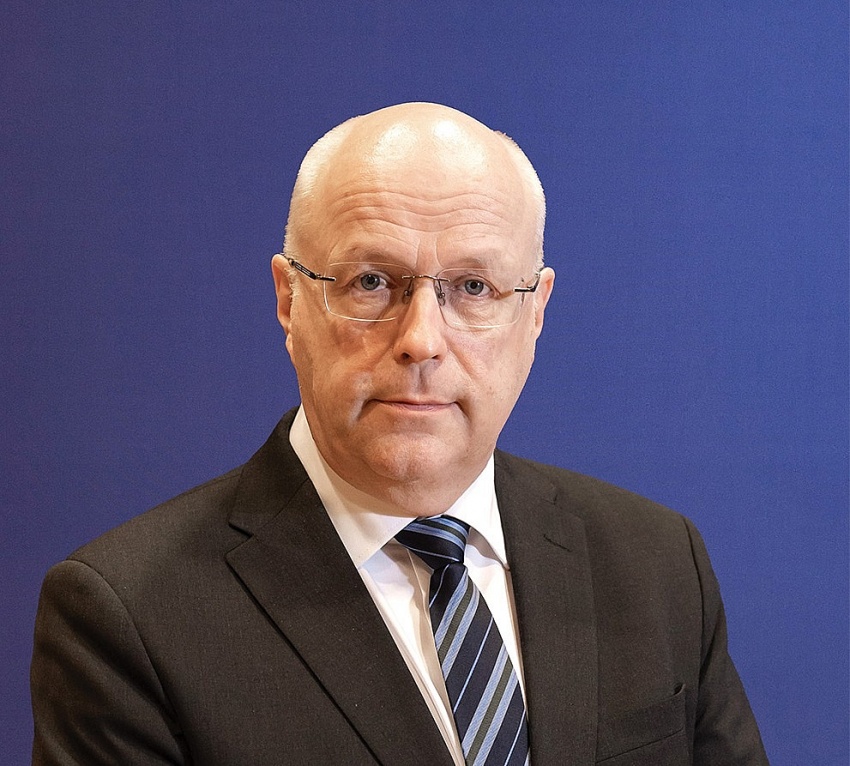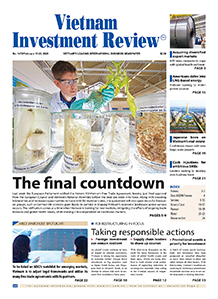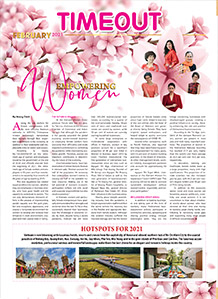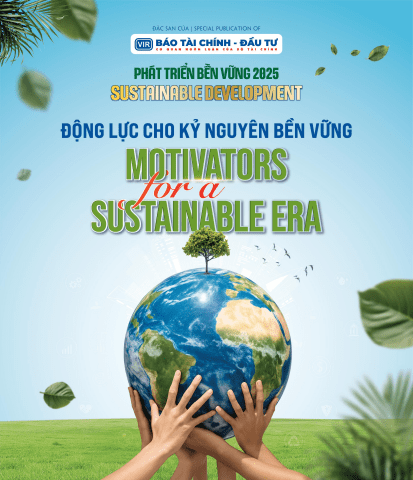Finland determined to team up in vocational training
Finland is renowned worldwide for its high-quality vocational training. What can Vietnam learn from this?
 |
| Keijo Norvanto, Finnish Ambassador to Vietnam |
Finnish vocational education has become a global model for the success. Its system blends academic integrity with real-world application, shaping students into confident, job-ready professionals.
The excellence is revealed in key aspects that make Finnish vocational education so exceptional, with an emphasis on its practicality, industry relevance, and adaptability to future needs.
Finland’s vocational education and training (VET) system is built on the core values of choice, equality, and excellence. Students can freely choose between general or vocational education after basic schooling – both paths equally respected and offering access to higher education and fulfilling career opportunities.
A defining feature of Finnish VET is its strong emphasis on hands-on, real-world learning, with approximately 70 per cent of training delivered through practical experiences. Apprenticeships are a mainstream option, allowing students to gain direct work experience and effectively bridging the gap between school and the workplace.
The system is closely connected to industry needs, with schools and businesses working together to ensure training stays relevant and up-to-date. This collaboration helps students build the skills, experience, and confidence needed for career readiness or continued studies.
Equally important is the system’s flexibility. Personalised learning paths and extensive support services foster inclusivity and equal access for all learners, regardless of background.
At the same time, a forward-looking curriculum emphasises future-proof skills such as sustainability, digitalisation, and entrepreneurship, ensuring students are prepared to thrive in a rapidly changing world.
How Finland and Vietnam have been furthering their vocational training cooperation over the past years?
Over the past years, Finland and Vietnam have forged a strong, long-term partnership with a focus on trade and sustainable development. While the collaboration in vocational education has been relatively modest, it is now steadily growing and expanding.
In January, a significant step forward was made when the Finnish minister of Employment and the former Vietnamese minister of Labour, Invalids, and Social Affairs signed an MoU. The agreement formalised a partnership that seeks to improve labour mobility, with a particular emphasis on facilitating the migration of skilled professionals, technical workers, and seasonal labourers from Vietnam to Finland.
This initiative aims to benefit both the Finnish economy and the Vietnamese workforce, supporting mutual prosperity. While still in its early stages, Finland is committed to assisting Vietnam in developing vocational training frameworks that meet the evolving demands of the Finnish labour market. The goal is to enhance the skills of Vietnamese workers, boosting their employability in a wide range of Finnish industries.
In recent years, increasing numbers of Finnish and Vietnamese organisations have come together to explore new partnerships in vocational education. Key initiatives, such as the Vietnam-Finland Vocational Education Forum (2023) and the SDG Booster Workshops on Vocational Education (2023/2024), have played a crucial role in fostering collaboration.
Vietnam has a limited number of vocational education students. How can you evaluate the existing vocational training activities in Hanoi in particular and throughout the country?
Parents and families would like to offer the best for their children, and many times the choices are higher education. That is understandable, but in Finland we have been able to actually make vocational education an attractive option on par with higher education.
Of course, it’s always up to every learner to follow the path, skill, or career they want. We are also considering how to improve the perception of vocational education as a viable option for children from an early age.
The Vietnamese government can support the reform of the vocational education system to make that happen and, of course, in teacher training.
In Finland, the education sector is almost completely public service, but the dynamic private sector in Vietnam presents opportunities for collaboration and innovation in the delivery of vocational education. We are willing to cooperate with Vietnam in this sector.
How can Vietnam successfully attract and retain talent, as Finland successfully does?
It’s really one of the topics we have been working on here in Hanoi. Vietnam is one of the key countries for the Talent Boost programme which was introduced by the Finnish government a few years ago.
Our current efforts are centred on attracting Vietnamese talents to Finland. We aim to make Finland’s higher education system, including both universities and universities of applied sciences, more appealing by highlighting the high-quality education it offers
Also, the Finnish working life and society as a whole hopefully will attract talent from Vietnam in the future. Due to our ageing population, Finland is in need of skilled professionals and students, and our country remains open to welcoming more immigrants to help meet these needs.
With more than 2,000 Vietnamese students currently in Finland, Vietnamese learners are recognised for their hard work, adaptability, and ability to integrate well into the Finnish society.
Finland hopes to expand this cooperation by offering quality higher education opportunities, a supportive environment and a competitive start-up ecosystem for skilled immigrants and entrepreneurs, thereby strengthening both nations through educational and professional exchange.
What the stars mean:
★ Poor ★ ★ Promising ★★★ Good ★★★★ Very good ★★★★★ Exceptional
Related Contents
Latest News
More News
- Businesses ramp up production as year-end orders surge (December 30, 2025 | 10:05)
- Vietjet chairwoman awarded Labour Hero title (December 29, 2025 | 13:06)
- How to unlock ESG value through green innovation (December 29, 2025 | 10:03)
- AI reshapes media and advertising industry (December 29, 2025 | 08:33)
- FPT and GELEX sign deal to develop blockchain tech for global markets (December 29, 2025 | 08:29)
- Vietnam’s GDP forecast to grow by 9 per cent in 2026 (December 29, 2025 | 08:29)
- Women entrepreneurs are key to Vietnam’s economic growth (December 29, 2025 | 08:00)
- Vietnam's top 500 value-creating enterprises announced (December 27, 2025 | 08:00)
- The PAN Group shaping a better future with ESG strategy (December 26, 2025 | 09:00)
- Masan Consumer officially lists on HSX, marking the next phase of value creation (December 25, 2025 | 13:20)

 Tag:
Tag:





















 Mobile Version
Mobile Version